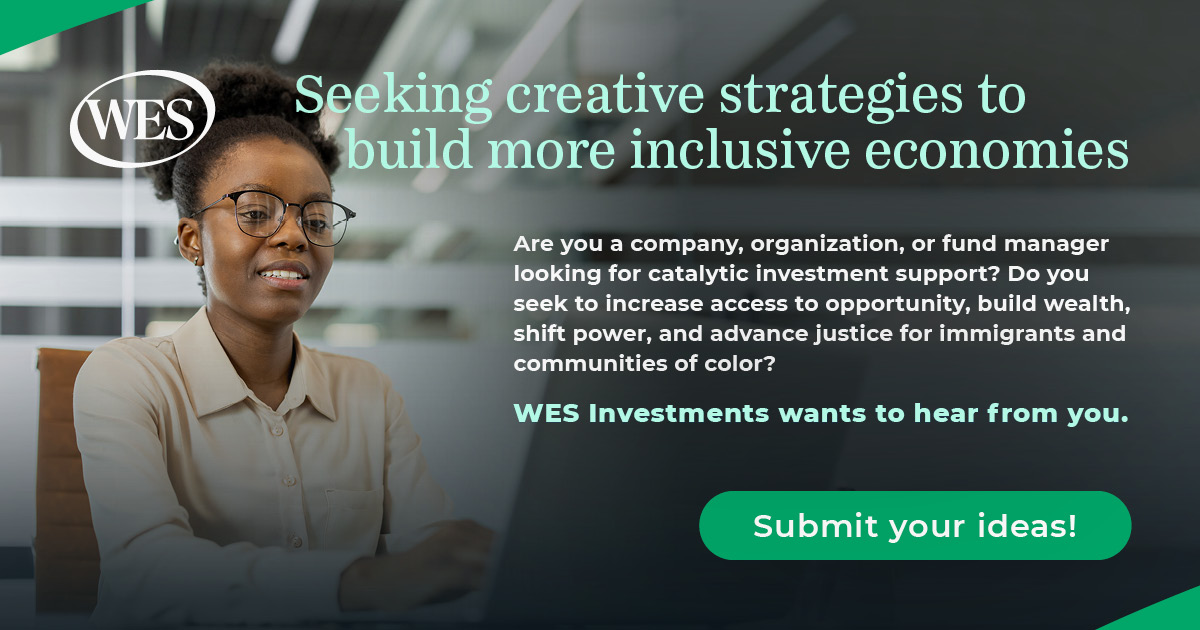Brendon Lundberg didn’t think of his business as a social enterprise — and he definitely didn’t describe it that way. At a recent pitch competition in Portland, OR, Lundberg explained to a room full of investors how Radiant Pain Relief Centres treats chronic pain without the use of drugs. As he spoke about how the Radiant technology works and the life-changing benefits it delivers for patients, my ears perked up. I have direct experience with the devastating effects of our national opioid epidemic — after a car crash left my sister with chronic back pain, she lost her life due to opioid addiction. In the years since, I’d learned a lot about the terrible opioid epidemic sweeping our country.
As excited as I was on a personal level to hear about an alternative to opioids, I was even more intrigued about the larger, cumulative societal benefits such treatment centers could deliver. According to the National Institute on Drug Abuse, approximately 40,000 Americans died from opioid overdose in 2016. That’s nearly 90 deaths per day. A study in the October 2017 issue of the journal Medical Care estimates that opioid addiction-related healthcare and public safety services costs the US nearly $80 billion per year. I knew that chronic pain — like that following a serious back injury — was a significant contributor to the opioid addiction epidemic. Radiant’s technology could alleviate that pain without drugs.

Radiant Pain Relief Centres offer an alternative to opioid drugs.
I was surprised Lundberg hadn’t mentioned those societal benefits in his presentation. During a break, I asked him about it. Though he was certainly aware of the problem, he hadn’t yet developed a strategy to capitalize on that aspect of his company’s value. I’m also an environmental geek, so I knew off the top of my head that approximately 40 million Americans live in areas with drinking water supplies that are tainted with pharmaceuticals because so many get flushed down the drain. Radiant might also help with that problem. As I learned more about Lundberg’s vision to cure chronic pain, create a culture of wellbeing in the company and community, and his aspiration of establishing a corporate giving program, I realized Radiant Pain Relief Centres was on the path to being a social enterprise — and the founder didn’t even know it.
The Broomsmen – Millennial Mindset, Unwitting Social Enterprise
Lundberg isn’t the only unwitting social entrepreneur I’ve come across lately in my role as a consultant. Phil Torchio got the idea for his recycling company after he often found himself cleaning up trash after the weddings his girlfriend helped plan. When he decided he ought to be getting paid for all the hard work, he launched The Broomsmen. He started providing his services to wedding events, then added concerts, festivals, and sporting events, and recently landed a major contract with the US Forest Service.
From the beginning, he was determined to keep as much waste out of the landfill as possible. The company designs on-site materials separation systems so that recyclables get cleanly sorted before getting picked up by a garbage company. In other words, it’s the link between the waste producer and the waste hauler — a special and successful niche.
When Torchio and I first met in early 2017, it was clear that I’d never known anyone as excited about waste streams. He was already thinking bigger than his own impact: one of his long-term commitments is to establish a corporate giving program that supports rag-pickers who sort through trash piles and landfills in very low-income, developing parts of the world. I asked him if he’d heard the term “social enterprise.”
In essence, a social enterprise is an organization that applies business strategies to maximize improvements in human and environmental wellbeing. In other words, social enterprises use business as a tool for positive social change. He hadn’t, but was very intrigued. He said he knew his company was already on a path to embed social impact in its core business, but didn’t yet know how, and hadn’t had time to formalize the strategy and tell that part of his vision and story. Torchio had a big vision and deep commitment to making a positive social impact, but needed some help with structure, messaging, and communications.
The Benefits Of Running A Social Enterprise
I’m always excited and encouraged when I run across an unwitting social enterprise. It means I’m interacting with a conscious, value-driven entrepreneur and often up-and-coming leader.
After pointing out to Lundberg that he fit the definition, we decided to work together so I could help him analyze and describe Radiant’s broader social and environmental benefits, build its triple-bottom-line values into its marketing materials and investor pitch deck, and begin developing its corporate giving program. “I was excited to have my eyes opened to the bigger societal and environmental benefits that Radiant could provide,” Lundberg says. “Developing a strong social enterprise approach is right in line with Radiant being a much more holistic, healthy option for our patients.”
I asked Torchio what he thought when I first introduced him to the concept of a social enterprise. “I knew we wanted to position that way because we were already doing it and we have so much to offer,” he said. “This is just the way of the future. Millennials especially are going to hold companies to a higher standard. Businesses of the future can’t just be about exploiting.”
He’s right. Consumer demand is growing steadily for products and services provided by good corporate citizens. According the National Marketing Institute over 40 percent of US shoppers intentionally purchase LOHAS (lifestyles of health and sustainability) and natural products and support companies known for strong social and environmental commitments. Such demand is growing as Millennials expand their purchasing power.
In addition to attracting LOHAS customers, social enterprises often enjoy increased employee loyalty and performance. Many of the companies I work with are start-ups, and once we have established their social enterprise platform they often attract funding from socially responsible investors.
Moving a Movement
You may be wondering why, if so many businesses are just doing it, it’s still important to talk about and be intentional around the idea of social enterprise. In fact, there’s never been a more important time. Successful companies sharing their stories of environmental and social commitment help raise public awareness about healthier, fairer business and economic options. Their leadership also inspires and empowers fellow entrepreneurs to make similar commitments. First we’re a few. Then we’re a movement. Then we’re a whole new economy.
The Key Social Entrepreneurship Questions
Are you in the same boat as Lundberg or Torchio — operating a social enterprise without realizing it? Find out by asking yourself these three questions:
- Are you committed to doing something about big societal issues like poverty, inequality, climate change, or the failing health of our oceans?
- Are you determined to provide high quality, living-wage positions for your employees?
- Are you committed to making a profit as a business?
If you answered “yes” to all three questions, then you may be running a social enterprise… .But there’s one more to answer before we can welcome you to the movement:
- Are you willing to let your commitments to society and the environment slide for a chance to make even bigger profits?
If you answered “yes” to that one, then you’re not a social enterprise yet. I suggest you need to dig a little deeper to truly become a socially conscious company. Doing so may be one of your most profitable decisions yet.






